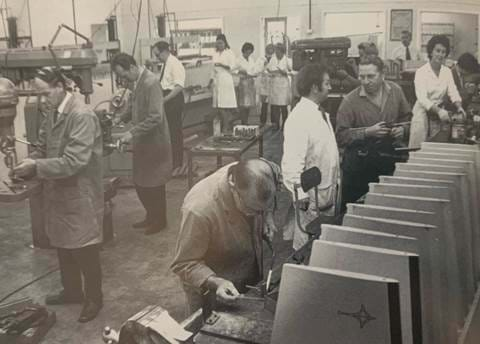The Pioneering Spirit of Chelton
How a thread of pioneering runs through the core of Chelton

A pioneering spirit has run through the veins of Chelton since its inception. From creating new concepts with the Driwiks static discharger to setting our sights on challenging markets other manufacturers would have walked away from.
What drives this pioneering spirit? It stems from our customer-driven ethos; from the need to create the best and most effective products for the people who will use them in some of the most demanding places on earth. Reacting quickly to industry trends and designing specifically to customers’ requirements, Chelton are not afraid to explore innovative concepts to improve performance and operations for the platforms we service. This is evident in our product portfolio, past and present.
From day dot, Chelton have pushed the boundaries of avionic capabilities. Out to make a name for ourselves, we were unrelenting in creating an ‘all-singing, all-dancing’ antenna in the 1960s and 1970s. The result: the world’s first radio-silent tuneable antenna. Up until Chelton’s pioneering solution, tuneable antennas needed a burst of transmission to be able to re-tune, which in turn gave away an aircraft’s position and left its communication systems vulnerable to jamming attacks. The revolutionary addition of a pin diode allowed the tuneable antenna to switch frequencies at great speed, enabling the aircraft to avoid detection.

It didn’t stop there as one of Chelton’s most memorable achievements was keeping Concorde flying through the 1990s. The supersonic airliner’s existing traffic alert radar system was experiencing major issues, but as Chelton was not the contracted supplier for this equipment, no-one at the company gave it much thought – despite the fact that radar issues can be antenna related. With the increasing likelihood of Concorde being taken out of service, US avionics group Rockwell Collins approached Chelton. In a race against time, our engineers had to work with what they had and battle constantly shifting goalposts. Despite this, a new antenna for the traffic alert system was ready for deployment. Not only compatible with the design already on Concorde, it was technically and structurally superior to its predecessor. Although Concorde is no longer with us, it could have disappeared from the skies a lot sooner had it not been for Chelton.
Our foray into communications began in the 1990s and marked another trailblazing moment for our company. When the first TETRA specification was published in 1995, Chelton created an airborne TETRA system enabling the police force’s air support personnel to communicate with the team on the ground. This solution utilised the Motorola vehicle radio which the force was already using for seamless communication between ‘bobbies on the beat’ and police support in the air. After these systems were deployed in the field, Chelton started capturing interest from international TETRA users, as the standard gained a foothold in Europe and across the globe. Our TETRA radio was adapted to allow it to be used across different regions and public safety sectors – and the latest generation is still in use today in the UK, US and in many other countries around the world.
Your quote basket is currently empty
 Please select the type of quote you require for this product:
Please select the type of quote you require for this product: